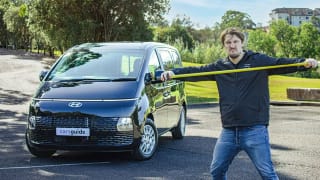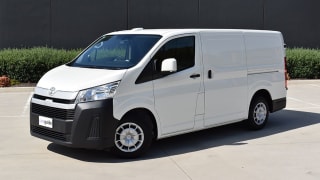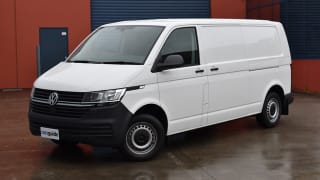The LDV eDeliver 7 is offered in three body styles and with the choice of two battery packs.
There's a short-wheelbase, long-wheelbase, and a long-wheelbase with a high-roof, but if you were hoping to customise further you're out of luck.

The eDeliver 7 range is offered with just one pre-set door layout, a kerbside sliding door and barn doors at the rear.
The two battery packs measure in at 77kWh or 88kWh offering ranges between 310km and 365km depending on bodystyle.

We'll talk more on range later (it should be sufficient for most operators), but you should also know the short-wheelbase version can only be chosen with the 77kWh battery, while the long-range 88kWh battery is the only option for the long-wheelbase with a high-roof. Check the table below for more.
LDV eDeliver 7 ABN MSRP
| SWB | LWB | LWB High-roof | |
| 77kWh | $59,990 | $61,990 | -- |
| 88kWh | -- | $64,990 | $66,990 |
Pricing is keen. Yes, the eDeliver 7 costs between $10,000-$15,000 more than most of its combustion rivals, but this pretty much accounts for the cost of its batteries and is about industry standard.
It also helps to get you off a dependence on diesel and in a key factor for some bigger corporate entities which may be required to budget for these, it has zero driving emissions.
Potential cost savings move beyond just not requiring a re-fuel either, with electric benefits when it comes to servicing. Again, more on this later.
Another bonus is the entire range comes in just one highly-specified trim level, cutting complexity.

Included are pragmatic 16-inch steel wheels and LED headlights, but the interior is more impressive with a new 12.3-inch multimedia screen.
It has Apple CarPlay and Android Auto connectivity, but it also seems pretty sharp and quick with refreshingly straightforward base software on it.
Other relative luxuries for the van segment include a standard heated steering wheel with leather trim, heated outboard seats, and a half-way decent information panel between the quaint analogue dials which make up the instrument cluster.




















